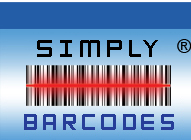
UPC Country Code Does the barcode tell me (or others) in which country a product was manufactured? We are asked this question daily. Unfortunately, there is a lot of misinformation on the internet and in e-mails that are going around. This happens especially frequently at times of product recalls or food safety scares. The truth of the matter is very simple: No, it is absolutely not possible to tell in which country a product has been made by looking at the barcode. Let�s look at this in more detail� All legal UPC and EAN codes (including the ones we sell) must originate with GS1. GS1 is the worldwide standards organization who governs UPC and EAN codes. GS1 has member organizations in just about every country. It is true that the first 2 digits of a UPC or 3 digits of an EAN code indicate the GS1 country member organization by which that UPC or EAN code was issued. Therefore, looking at a giving UPC or EAN code, it is possible to tell in which country the code was originally issued. However, that does not reveal any information regarding where the product was manufactured. Why is this? The UPC and EAN system is designed for universal compatibility. What this means is that the EAN system will permit importing and exporting of goods from/to any UPC or EAN country without requiring re-barcoding. Otherwise, one would have to make a different production run featuring a different barcode for every country in which the product will be sold. That would be a huge burden on manufacturers. Example: You will find products sold in retail stores in France that are made by an Australian manufacturer but barcoded by a German distributor with an EAN barcode originally issued in Germany. The EAN system is designed to accommodate this type of retail activity. Since anyone in the retail process can take responsibility for obtaining the barcodes for a product (from the company who invented the product, to the manufacturer, to the importer, to the distributor, and even the retailer) AND since these different players in the retail process often reside in different countries, looking at a given UPC or EAN number reveals little to nothing about the origin of the product. Still not convinced? Here is a quote from the website of GS1, where all legal UPC and EAN numbers (including the ones we sell) originate:
So, is there a way of identifying the origin of a product? You may be surprised by how low-tech the answer to this question is� While not 100% reliable, the best way of identifying the origin of a product remains the "Made in [country name]"" printed on the product. Both the Federal Trade Commission (FTC) and the U.S. Customs Service, now called US Customs and Border Protection (CBP), govern the rules by which manufacturers must label their products as "Made in [country name]". These rules and special applicable laws are quite complex and vary across industries. If you care to explore them in detail, there is a good write-up (if slightly aged) published by the FTC�s Bureau of Consumer Protection here. |
||
For more information regarding UPC codes / barcodes: Call 877-872-2060 (toll-free) or 1-404-869-0701 (international) testimonials | UPC Barcode Guide | UPCcode.net - Site Map barcodes for dvd | barcodes for cd | barcodes for books | barcodes for magazines | barcodes for amazon |
Page Topic: UPC Codes, Bar Codes, Barcode, UPC Barcode